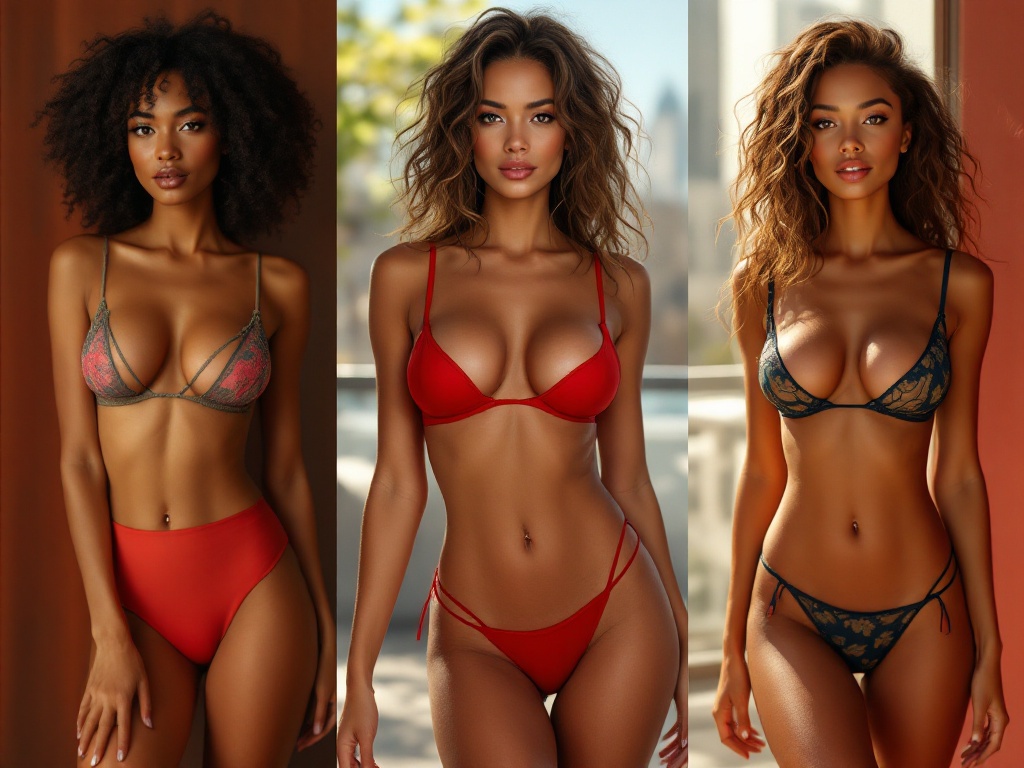In the rapidly evolving realm of artificial intelligence, crafting lifelike visuals has become a top priority for developers, particularly in specialized areas like adult content. Human emotions are primarily communicated through facial expressions and the captivating charm of the eyes. This piece explores the significance of achieving realism in AI-generated visages and examines the unique hurdles associated with creating believable eyes and expressions. By grasping both the technological and artistic nuances, we can unlock new vistas in digital representation, making erotic imagery resonate more deeply with audiences. Additionally, employing cutting-edge techniques such as motion capture and machine learning can elevate this realism, pushing the envelope of creativity in AI. Come along as we analyze these components and ponder the future possibilities.

Grasping the Significance of Realistic Facial Characteristics in AI
The believability of facial features substantially influences how viewers connect with AI-crafted personas. Genuine facial expressions can stir emotions, drawing the audience into the story conveyed by the visuals. The eyes, in particular, play an essential role, often described as the gateway to a character’s soul, telling tales that words may fail to convey. For these connections to flourish, AI must adeptly replicate human emotions, aligning with expressions and eye movements that create specific moods in erotic art. Without this meticulous attention, even the most imaginative AI models might feel flat and lifeless.

Obstacles in Crafting Realistic Eyes with AI
Despite significant strides in AI imagery, the task of creating authentic eyes remains formidable. Eye details demand a precision that’s often hard to meet. Here are some crucial factors affecting realism in AI-generated eyes:
- Iris and Pupil Detailing: Capturing the intricate textures and varied colors is essential for believability.
- Lighting and Reflection: Authentic light reflection on the cornea dramatically impacts the lifelikeness of the eyes.
- Eye Motion: Genuine movements like blinking and shifting focus are vital for capturing the viewer’s attention.
Tackling these challenges necessitates inventive techniques and technologies. Here, we summarize some key methods used in eye creation:
| Technique | Description |
|---|---|
| Algorithmic Generation | Employing algorithms to dynamically create variations in texture and color. |
| Deep Learning Networks | Leveraging extensive datasets to train AI in accurately capturing eye attributes. |
| Instantaneous Rendering | Executing real-time light calculations for dynamic settings. |
Creating Genuine Facial Expressions via AI
As important as the eyes are, the facial expressions that reveal a character’s emotions are of equal significance. This complex dance of facial muscles plays a crucial role in the authenticity of AI-generated visuals. To achieve these genuine expressions, state-of-the-art techniques can be implemented to amplify the emotional bonds with viewers.
- Artificial Intelligence Approaches: Training AI with varied datasets enables it to replicate the subtle intricacies of human facial expressions.
- Simulation of Physical Movements: Incorporating simulations that account for skin tension and muscle dynamics heightens realism.
- Emotion Databases: Constructing extensive libraries that categorize various emotions can enhance AI’s ability to produce facial expressions.
The magic resides where technology meets artistry. Artists provide crucial insights into the human psyche, guiding AI systems to interpret these complex signals better. Through this collaborative effort, we can create vivid, relatable characters that leave a lasting impression on audiences.

Exploring the Impact of Motion Capture Technology
Motion capture (MoCap) technology has become an indispensable asset in developing realistic AI characters. By capturing the fine details of human facial motions, this technology lets AI systems learn the subtleties necessary for emotional displays.
Incorporating MoCap data can dramatically elevate an AI model’s ability to mimic human expressiveness. This leads to more dynamic, responsive characters, which are especially crucial in narratives needing high emotional engagement, such as adult content. As MoCap technology advances, creators can extract extensive details, resulting in enhanced visual storytelling.
Conclusion
Enhancing the realism of AI-generated eyes and facial expressions is vital to crafting captivating adult content. By addressing inherent challenges and employing a suite of innovative techniques, we can offer more genuine and immersive experiences for viewers. The fusion of technology, creative artistry, and advanced methodologies like motion capture sets the stage for a new era in digital visuals. We stand at the dawn of endless possibilities in creativity; the horizon is vast. As we continue to explore these innovations, the creative potential is boundless.
FAQ
- What are the greatest challenges in AI-generated eyes?
- Precise rendering of iris and pupil details
- Exact lighting effects
- Authentic eye movements
- How can machine learning enhance facial expressions in AI?
- Training on diverse datasets empowers AI to emulate human expressions
- Boosts subtlety and authenticity in emotional portrayals
- What is motion capture’s role in refining AI realism?
- Provides detailed tracking of human facial gestures
- Boosts realism in AI-generated expressions
- Can artists influence AI-generated content?
- Absolutely, they offer key insights into human emotions
- Assist in enhancing depth and believability in AI visuals
- Why is realism crucial in AI-generated adult content?
- Intensifies emotional connection
- Ensures content is more enticing and relatable


